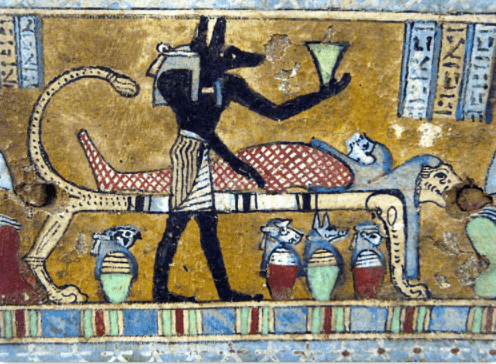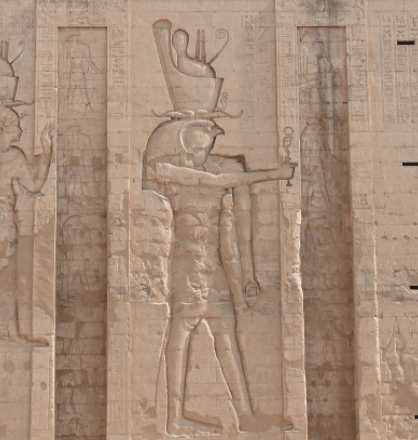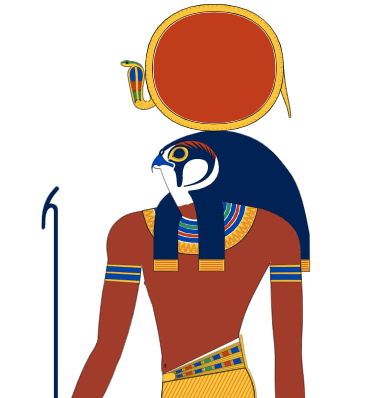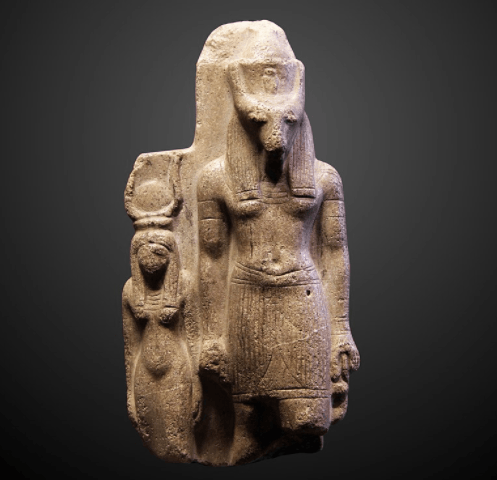In ancient Egyptian mythology, many gods were depicted as being part human and part animal, often with animal heads and human bodies.
This was done to demonstrate certain personalities of the different gods. In this article, we take a closer look at why many Egyptian gods and goddesses had animal heads.
What Does Theriocephaly Mean?

Firstly, it is a good idea to become acquainted with some terms commonly used to describe Egyptian deities and, in general, many of the gods and goddesses from other mythologies.
Therianthropy refers to the ability of a being to shapeshift between a human and animal form. A therianthropic god, therefore, is one that displays physical characteristics of both.
More specific to this topic is the term theriocephaly, which refers to a specific type of human-animal hybrid, namely, one with the head of an animal and the body of a human. The derivation of the word comes from the Greek words therion and kefalí, meaning ‘beast’ and ‘head’, respectively.
Many gods from ancient mythology are theriocephalous – skip to the end of the article to see a list of Egyptian Gods with Animal Heads
Why did Egyptian Deities have Animal Heads?

It is believed that many gods and goddesses in Egyptian mythology were depicted with animal heads in order to represent their personalities or specific traits that were important to their purpose.
For example, Sekhmet (the goddess of healing and war) was often displayed with a lion’s head in order to show that she was a ferocious entity with a powerful aura.
Anubis (the god of death), on the other hand, was often depicted with the head of a jackal, as the animal was closely associated with death during ancient Egyptian times.
Elsewhere, the god of knowledge, Thoth, is always displayed with the head of an Ibis. Ibises were revered in ancient Egyptian times as a sacred bird full of wisdom.
List of Egyptian Gods with Animal Heads

Some of the most prominent deities in Egyptian mythology are theriocephaly. The following are some of the major deities, along with the animal that they form the hybrid with.
- Amun – A major deity in Egytpian mythology. Often depicted with the head of a ram and body of a man.
- Anubis – God of death. Head of a jackal, body of a man.
- Apophis – Demon of chaos. Head of a serpent, body of a man.
- Ra – God of the sun. Many forms, but usually depicted with the head of a falcon with a sun-encircled cobra resting on his head.
- Horus – God of kinship and sky. Head of a Falcon, body of a man.
- Thoth – God of knowledge and wisdom. Head of an Ibis, body of a man.
- Sekhmet – Goddess of healing. Head of a lioness, body of a woman.
- Sobek – God of pharaonic power and protection from the Nile. Head of a crocodile, body of a man.
Get in Touch
Did you enjoy reading about why Egyptian gods and goddesses had animal heads? If so, let us know in the comment section below!
Check back regularly with Mythology Planet for weekly posts about mythology stories and obscure tales of gods and goddesses.
For any other enquiries, contact me at basil@mythologyplanet.com

Thanks